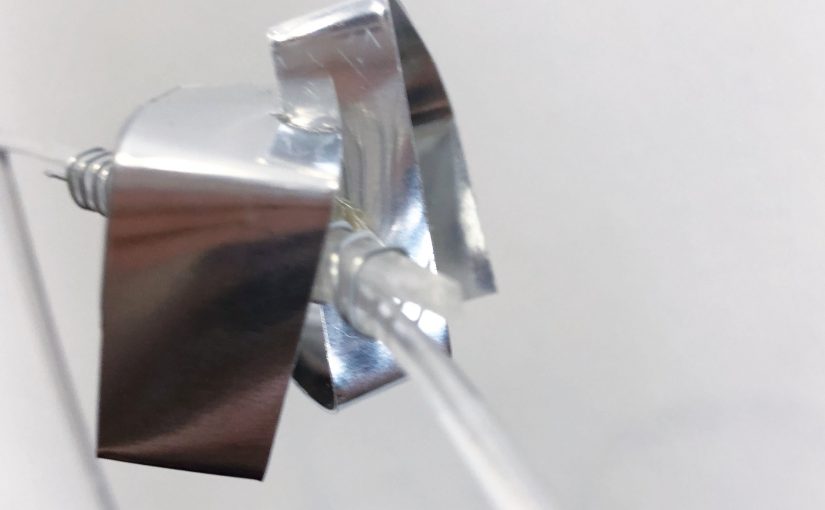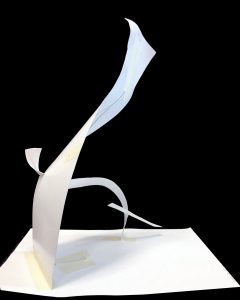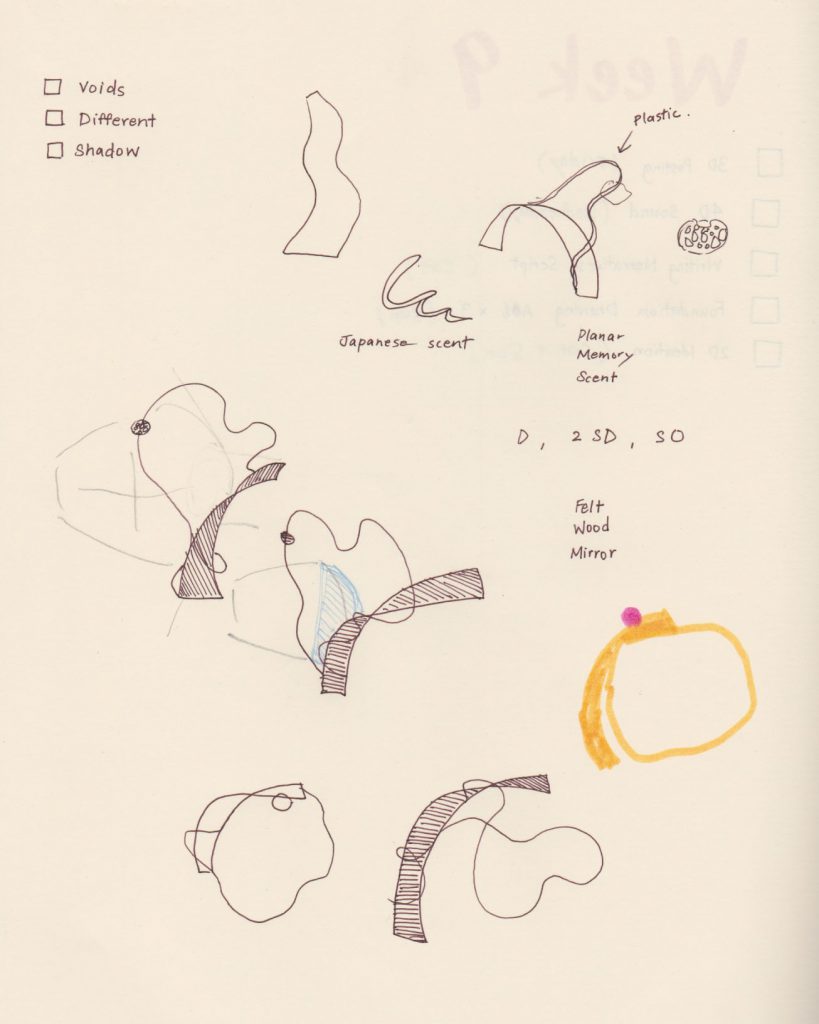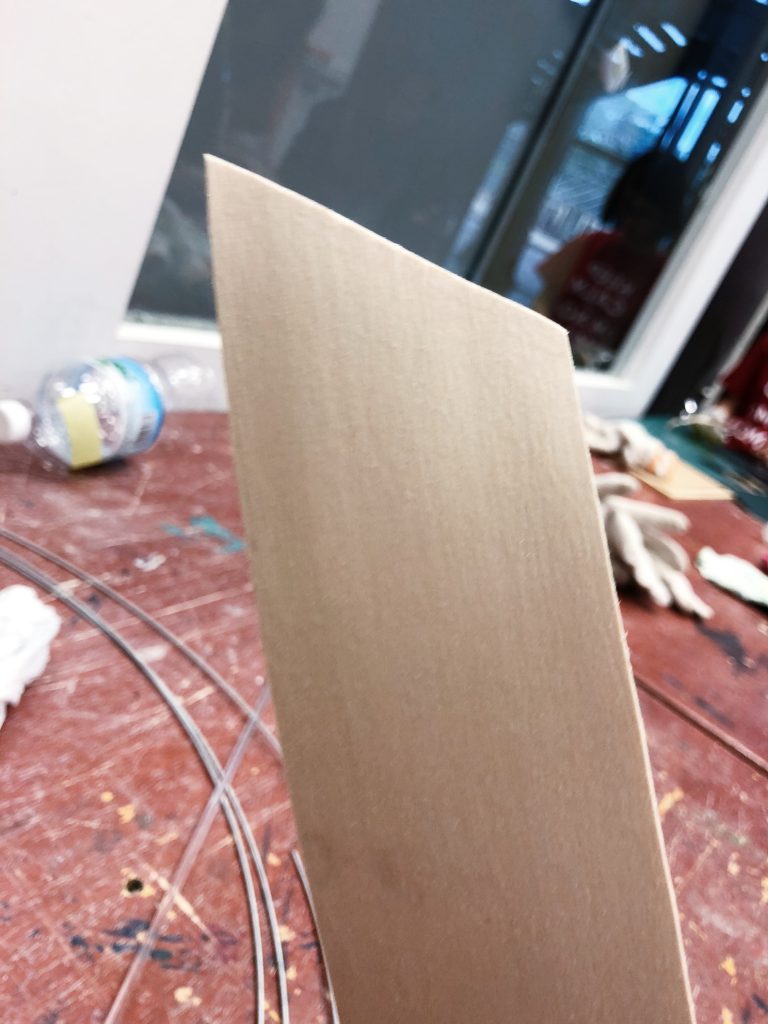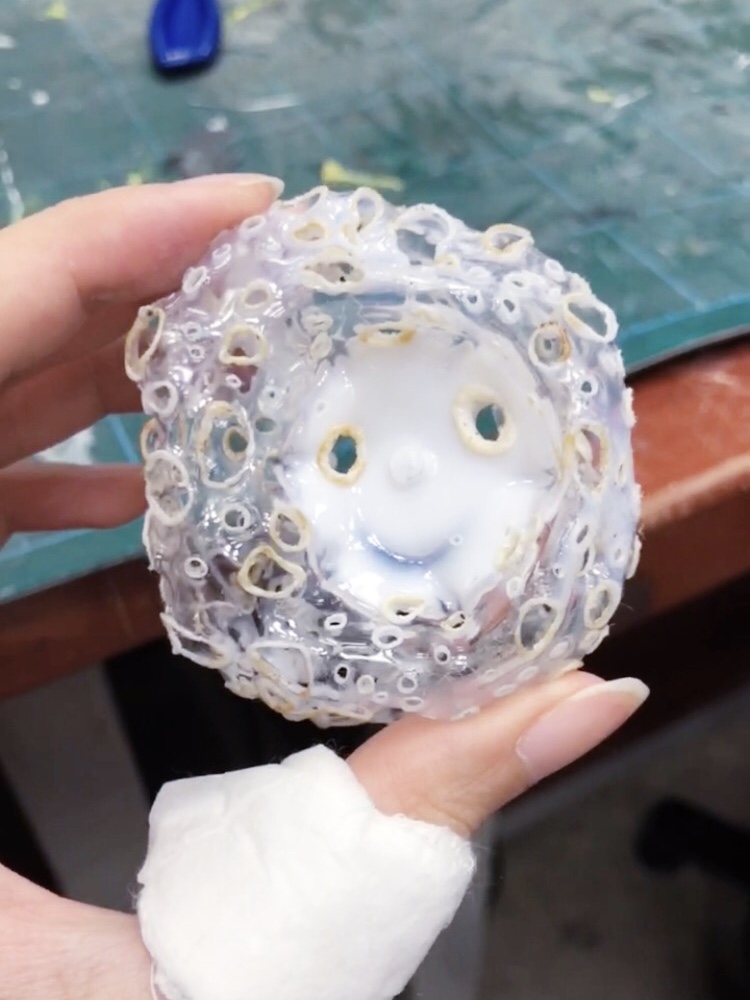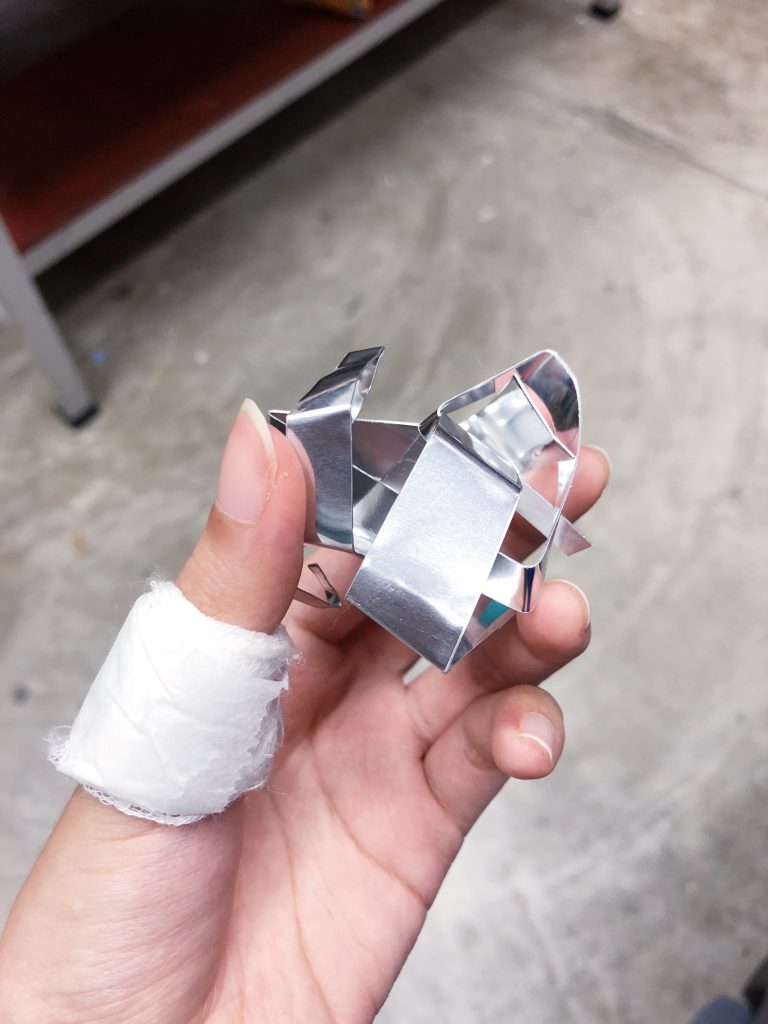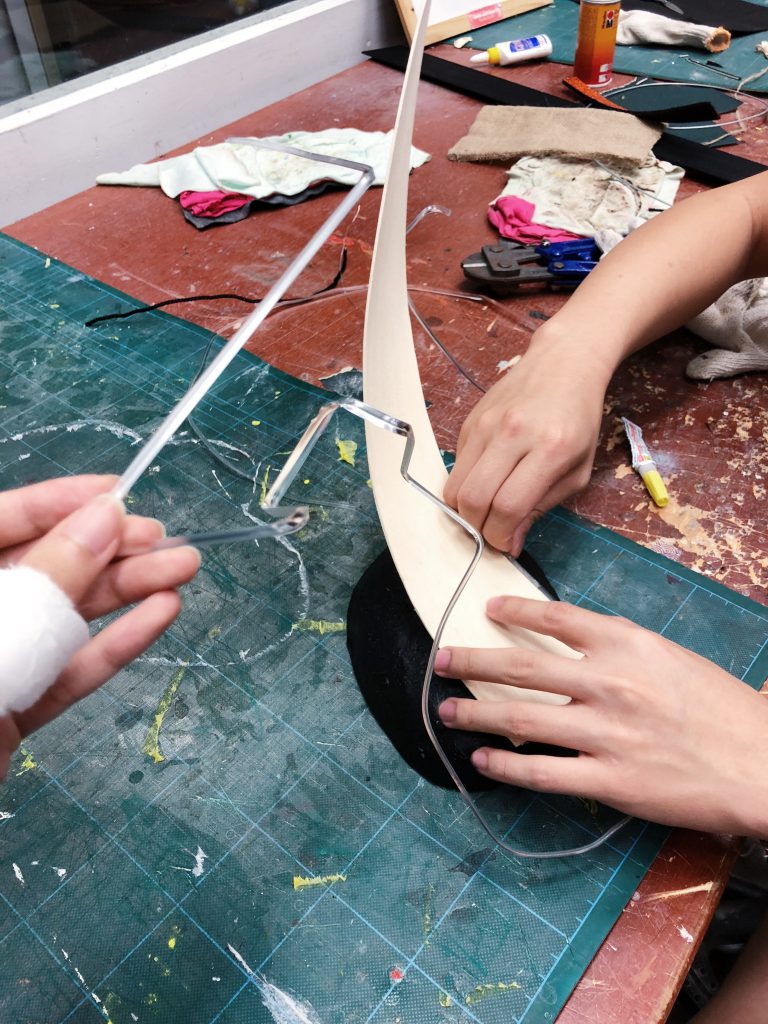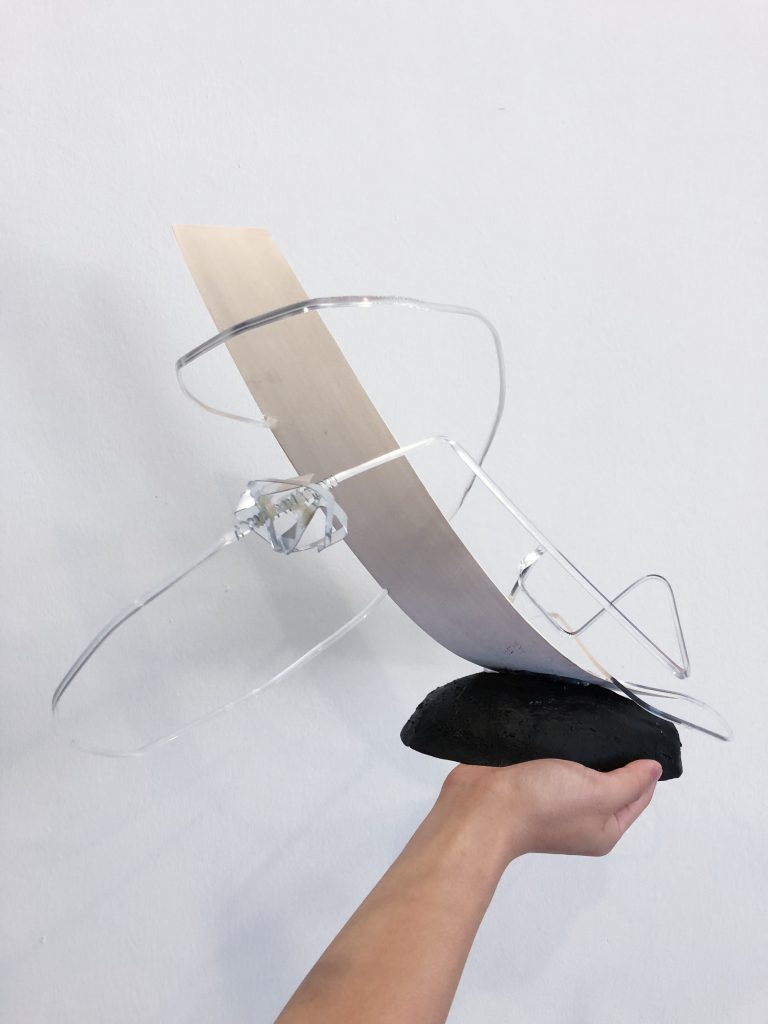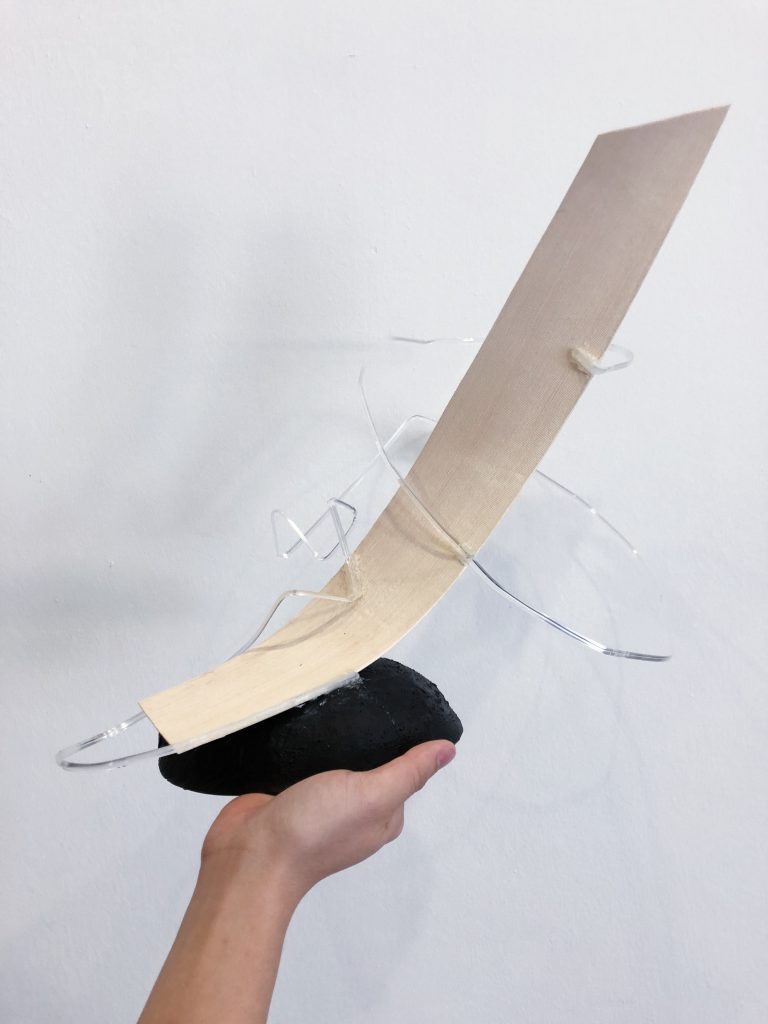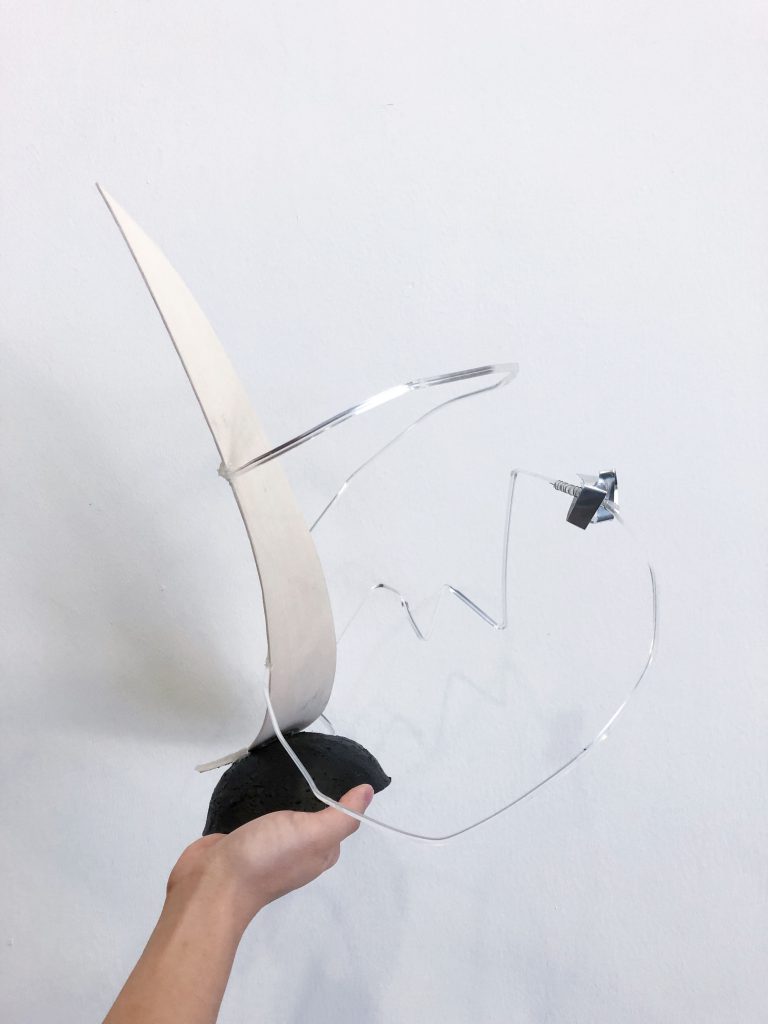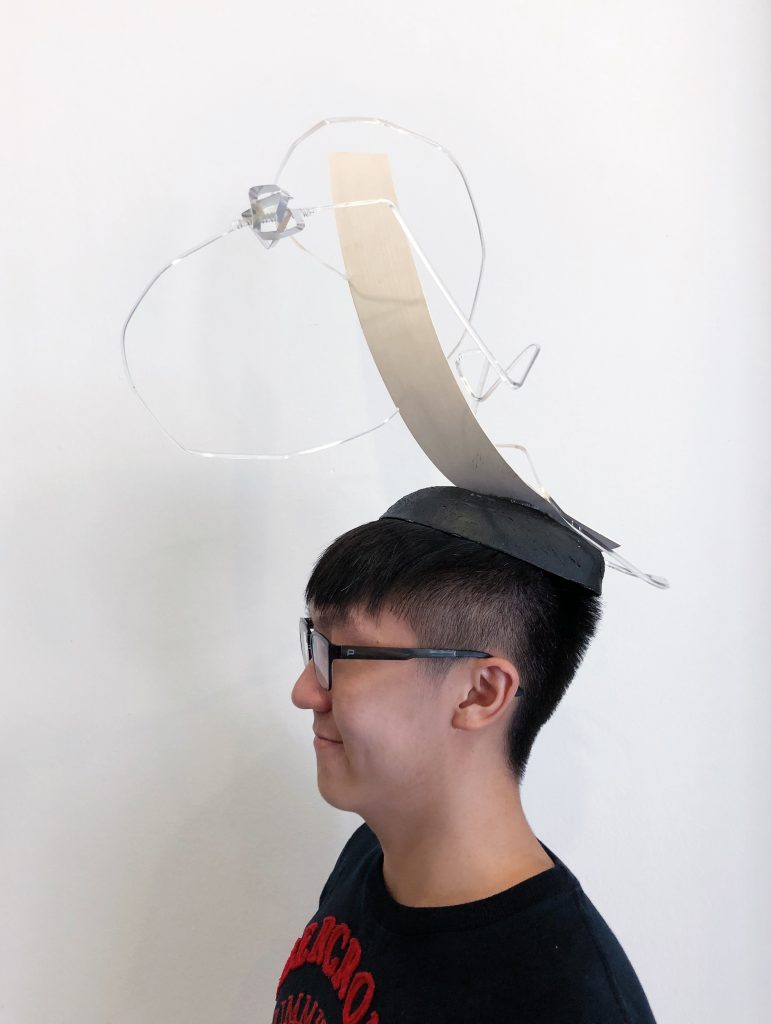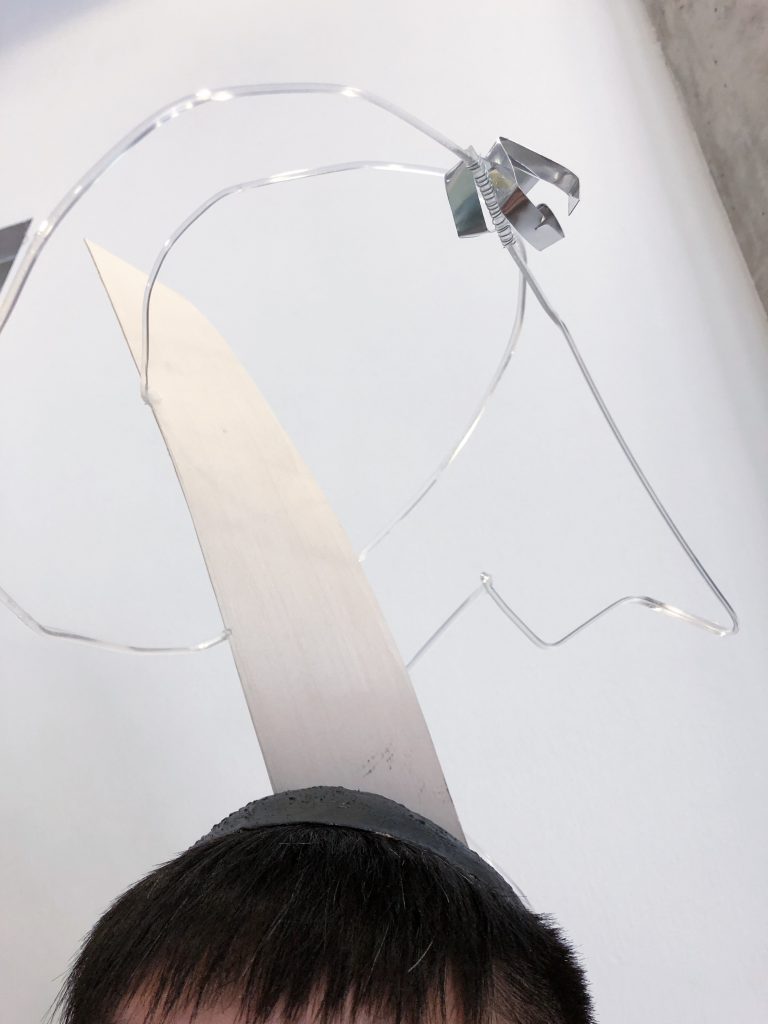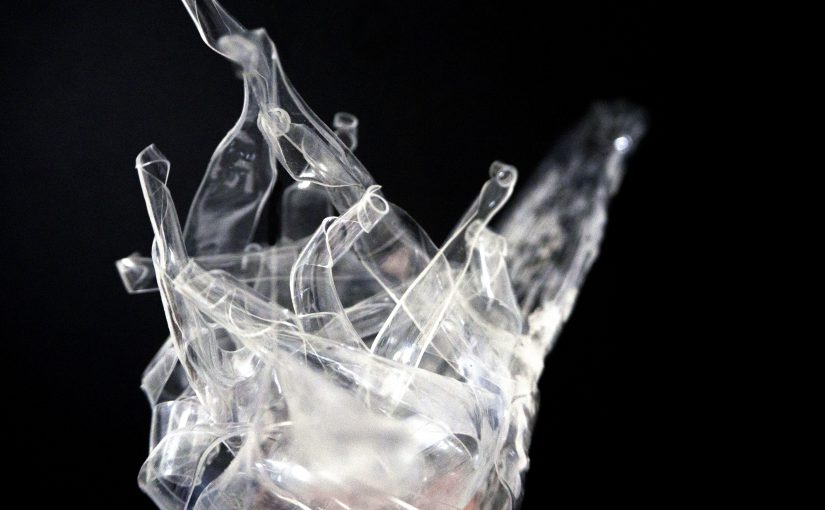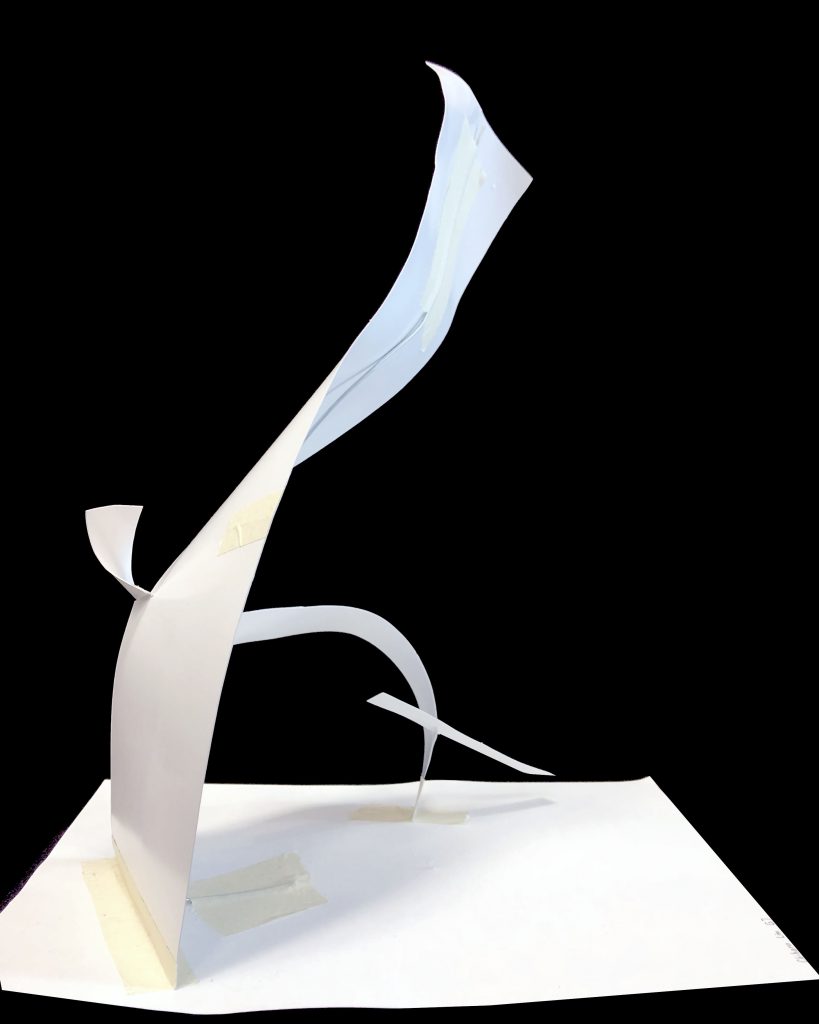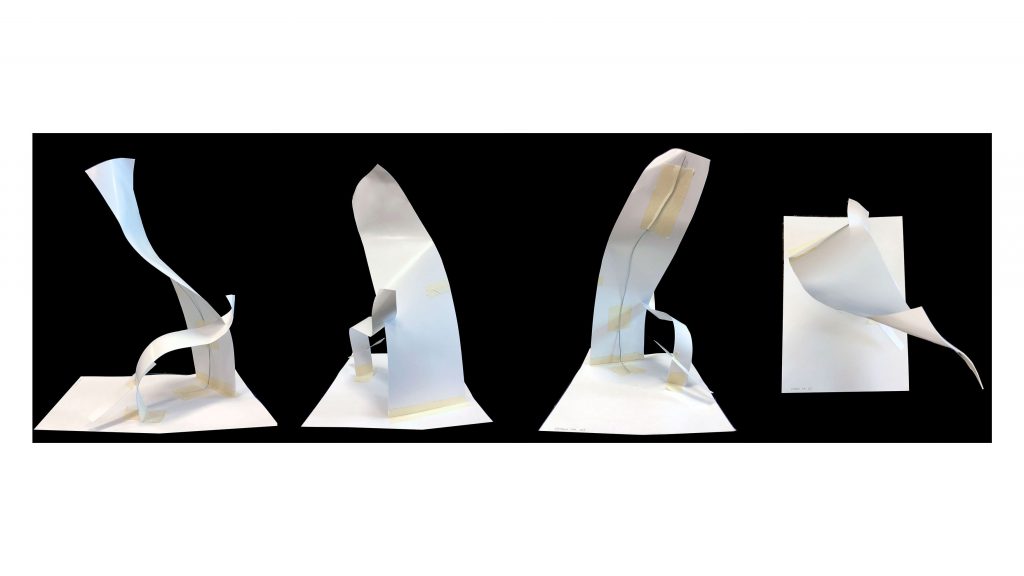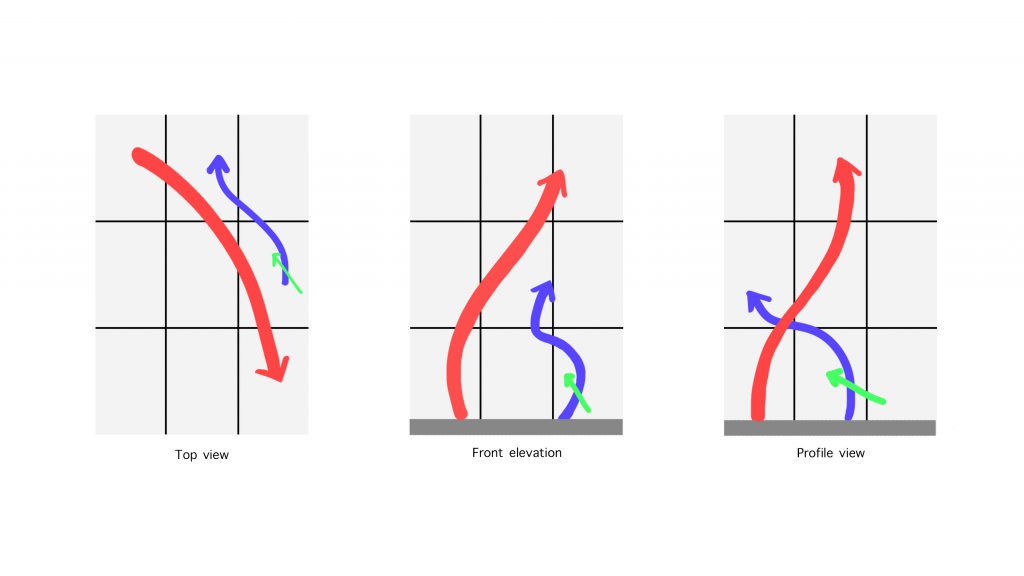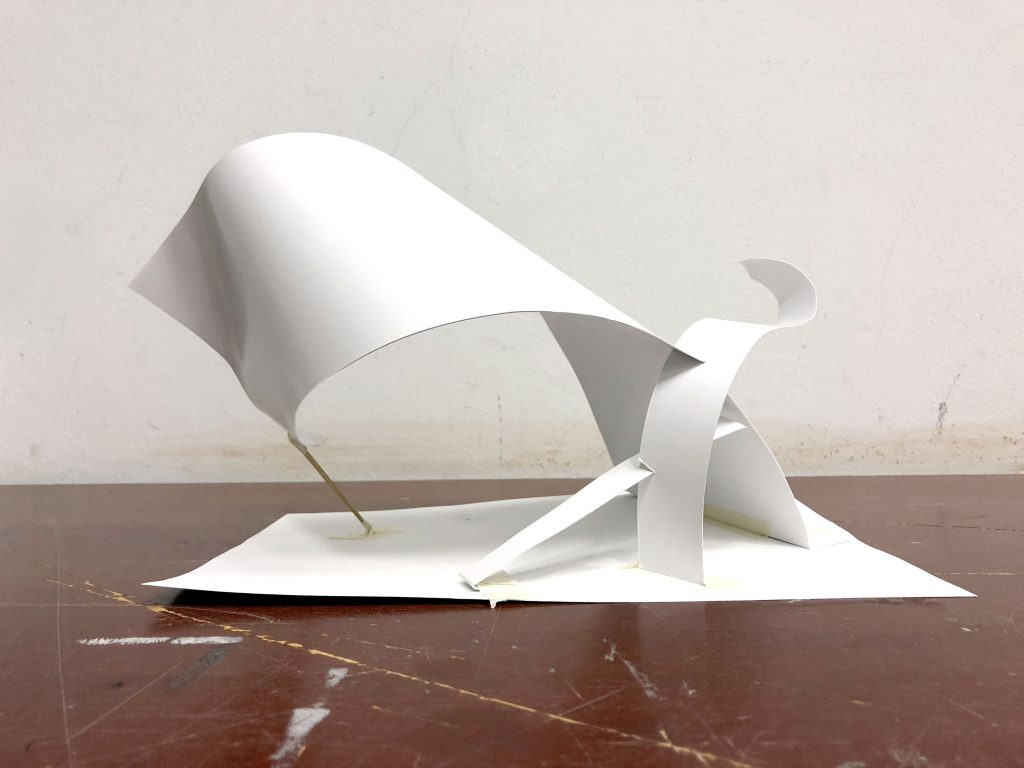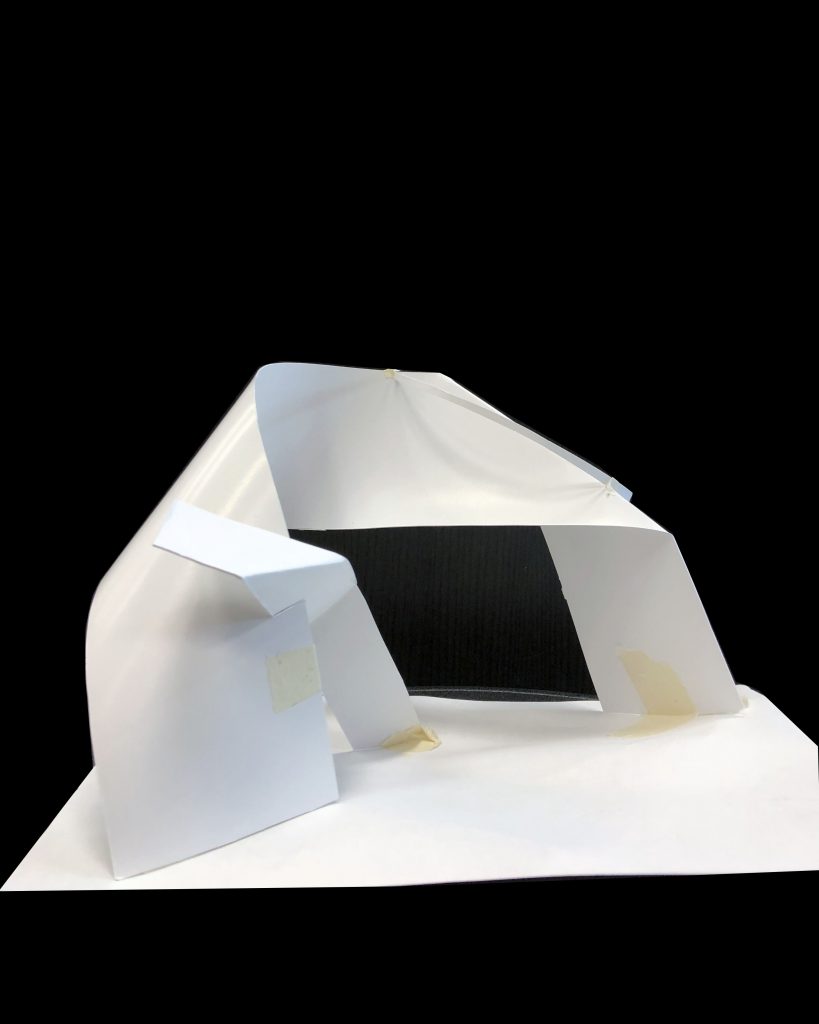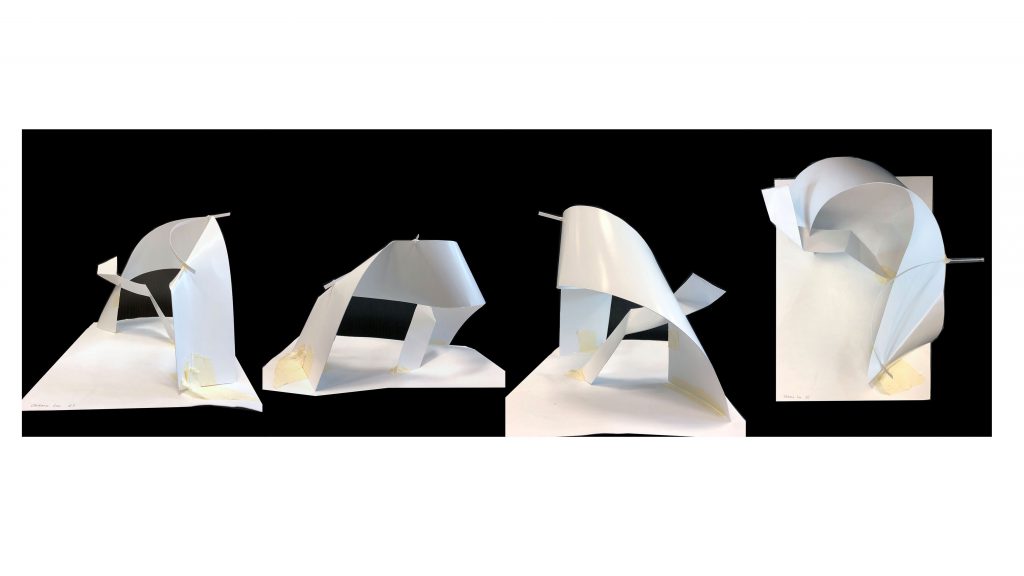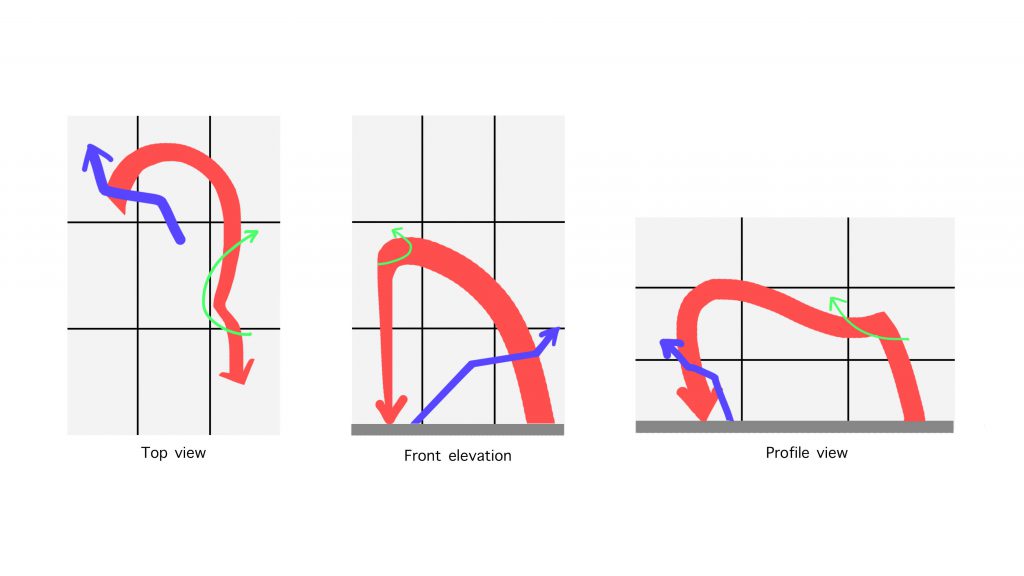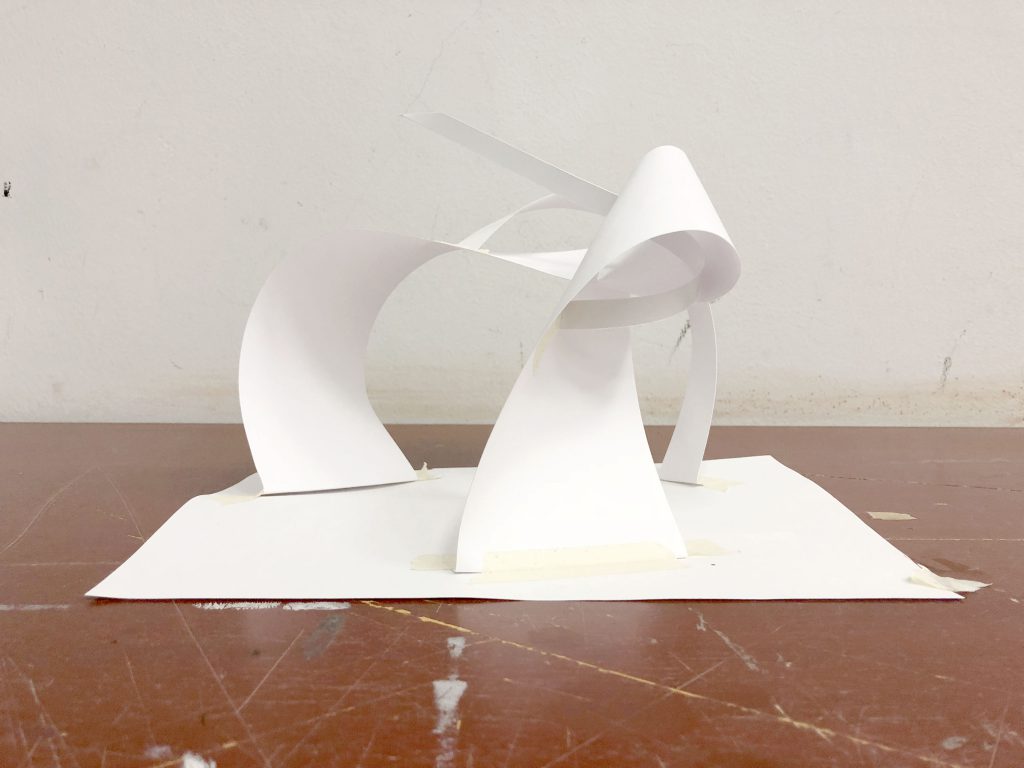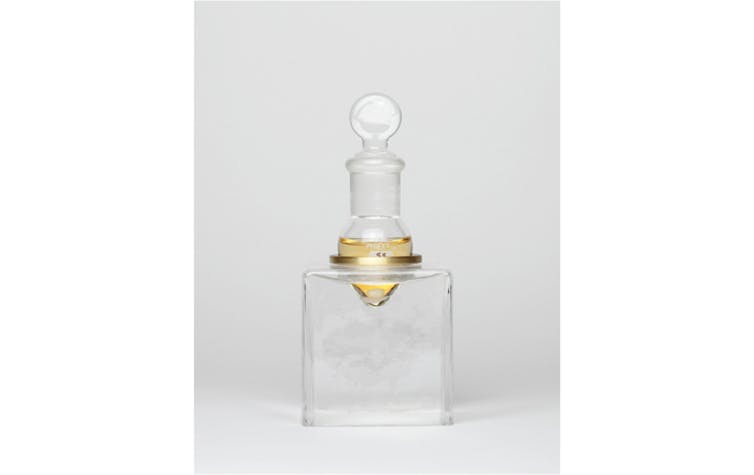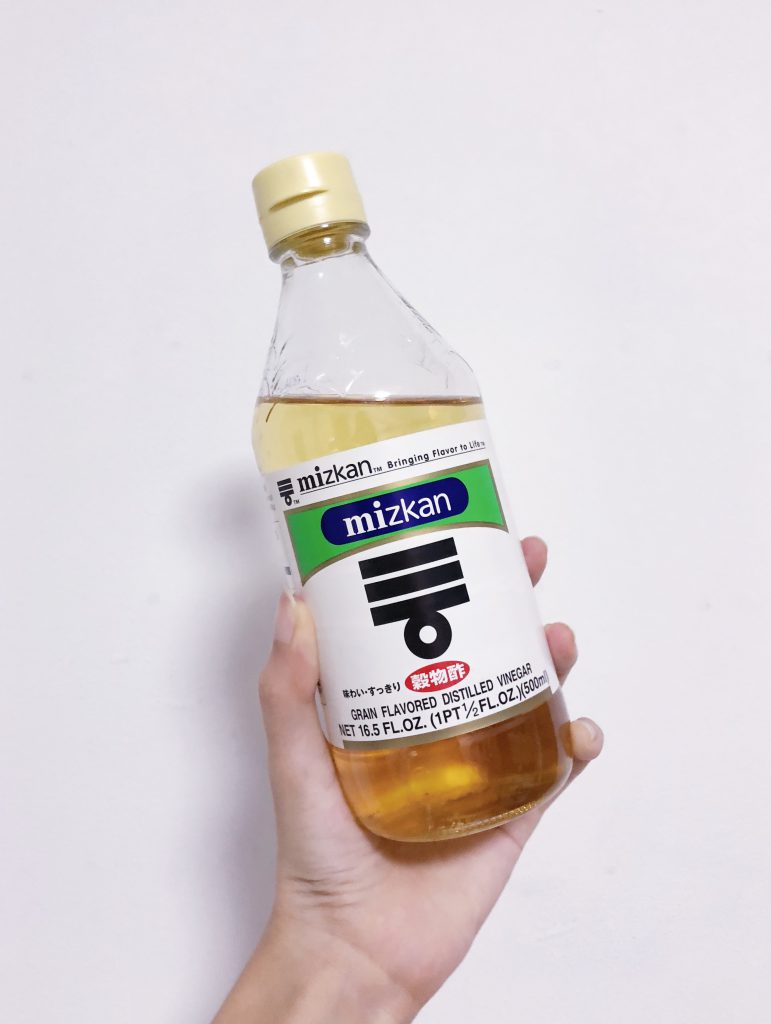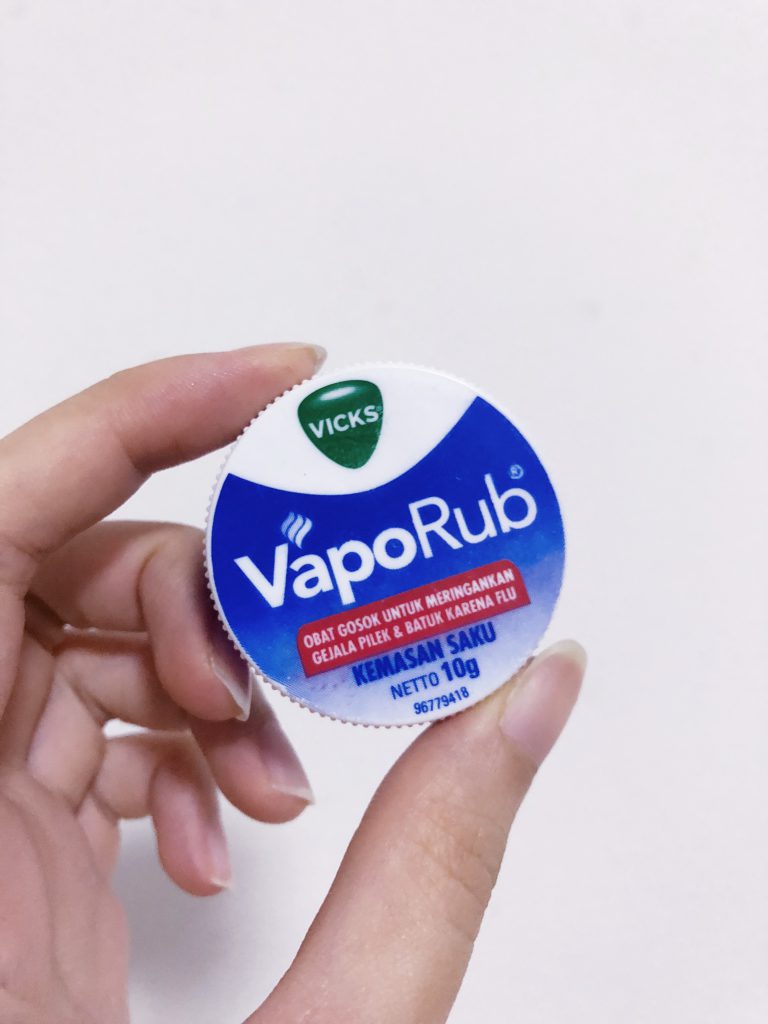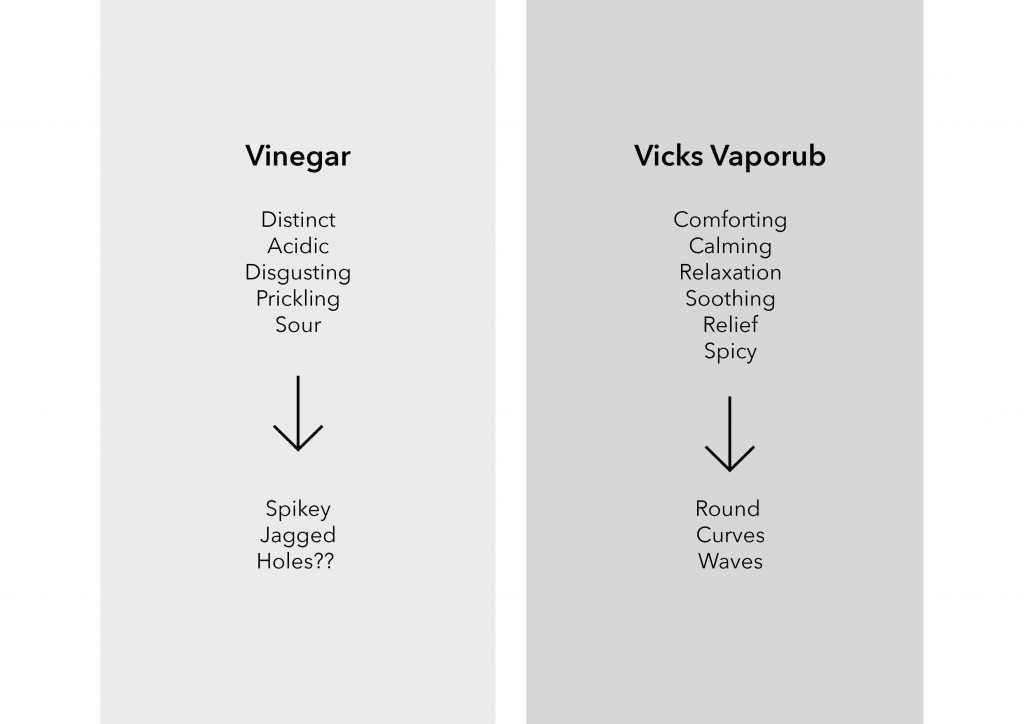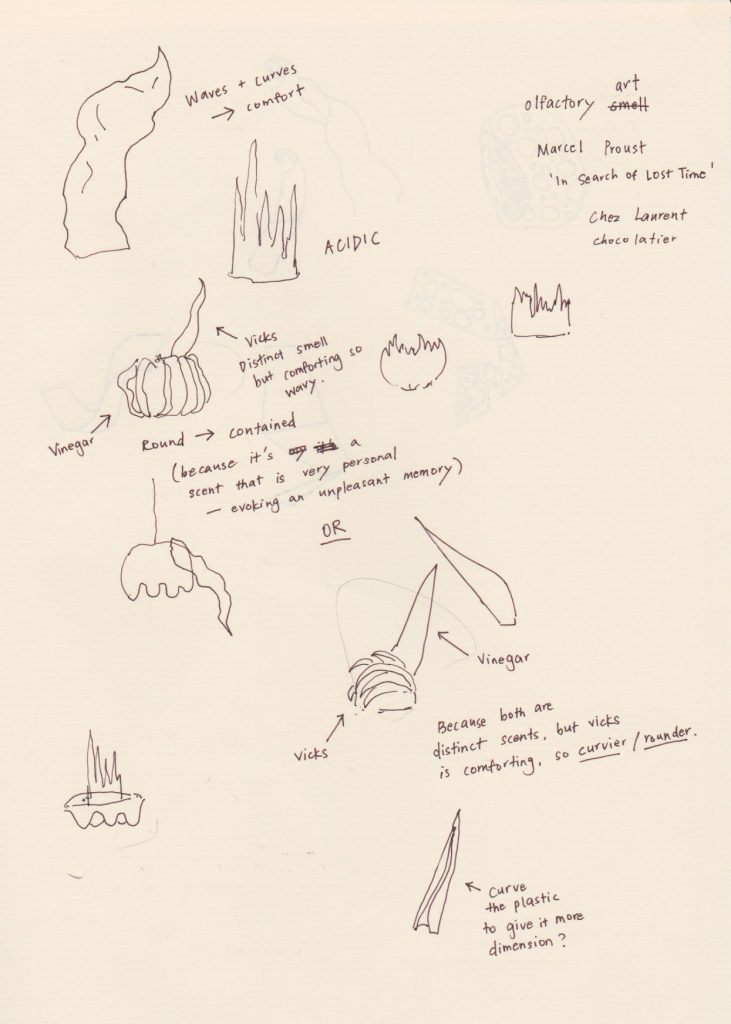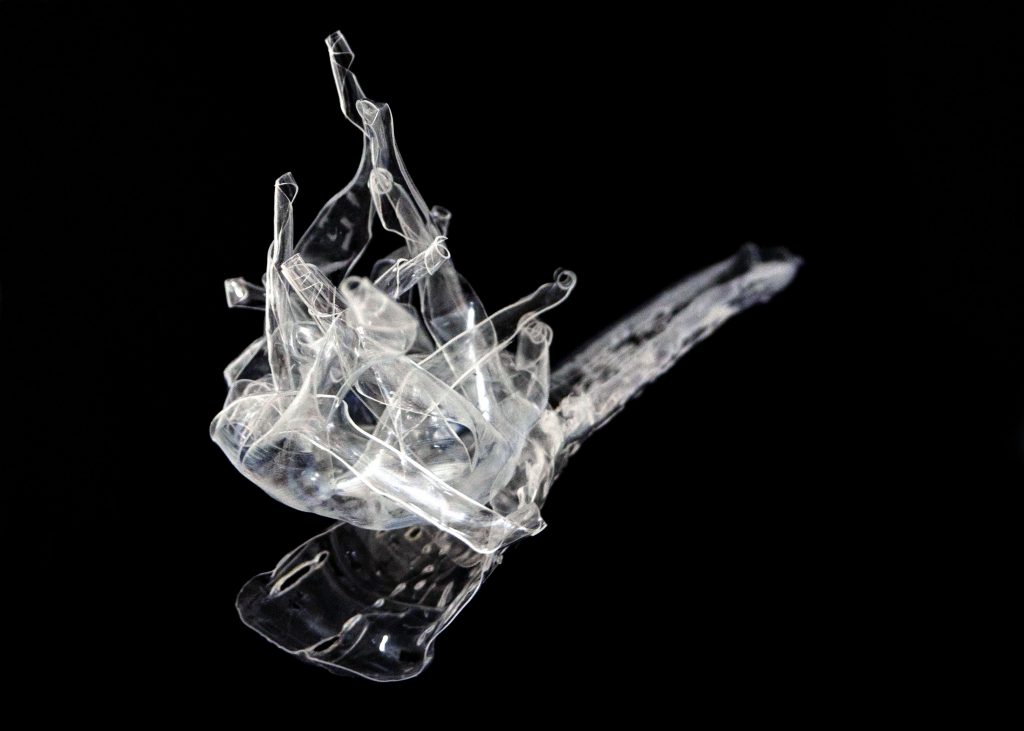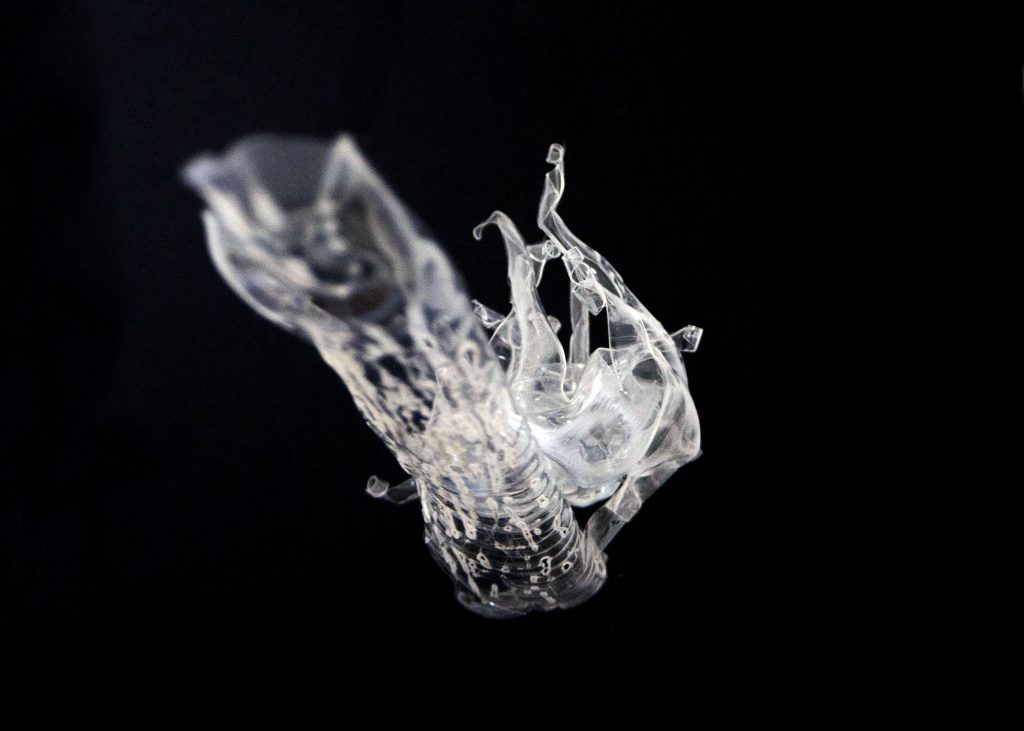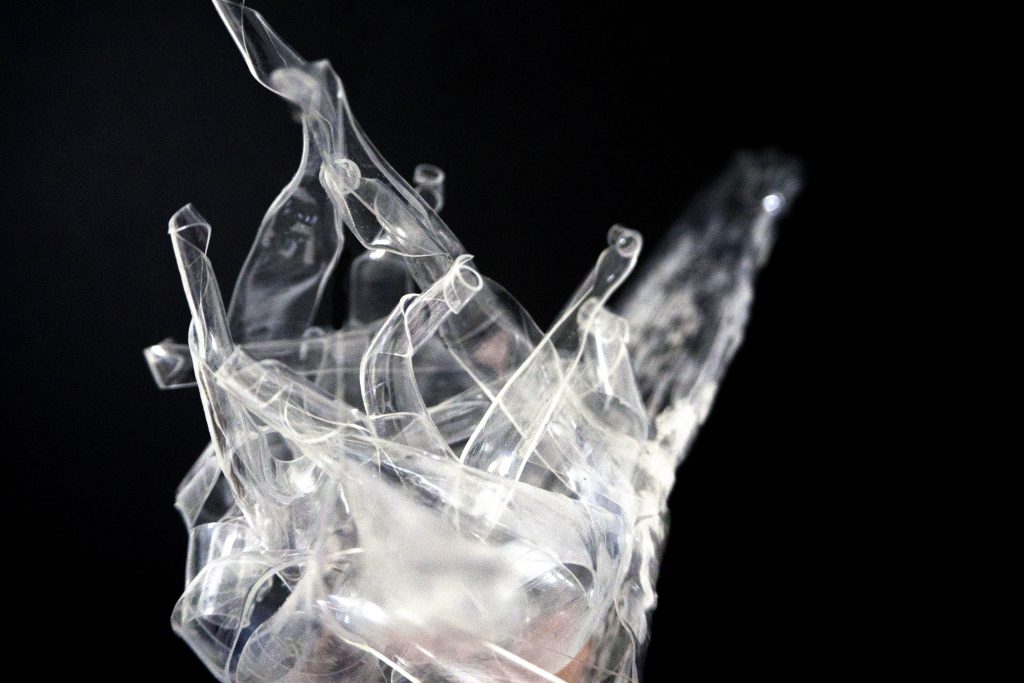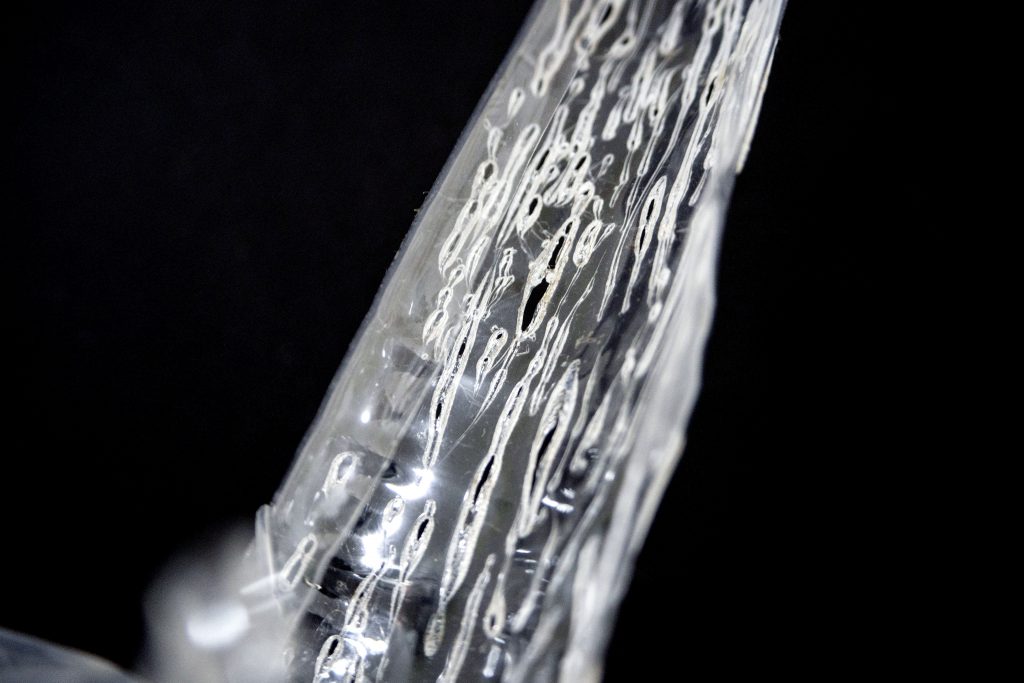Pairwork
Chiharu & Jun Ming
Following 003A, we were to work in pairs to create a fashion accessory incorporating both planar elements and our scents. We started by observing both our planar and plastic bottle models and picking out elements that we liked.
One of the elements that we ended up using was the dominant component of this sketch model. We felt that it would be interesting to include into our final piece because it plays with verticality.
Ideation
Next we did some sketches to help visualise our model better. We decided that the SD, which is the long strip that wraps around the dominant, would represent our scents.
Our initial sketches actually was of a different orientation (as seen below). When we were figuring out what sort of accessory we should make, we changed the orientation of our sketch, and found out that it worked better in a different orientation. It started to look like a headpiece, which explains the sideway head sketches.
Process

We faced challenges with every component due to our choice of materials. Bending wood required patience and teamwork as one of us had to hold the heat gun while the other shaped it. If we pointed the gun too close, we’d end up charring the wood or burning our partner. After bending, we decided to taper the end to make it seem like its disappearing upwards.
The piece of plastic below was originally going to be our SO, taking inspiration from Jun Ming’s unpleasant scent in his plastic bottle model. However there were burnt parts which made it not aesthetically pleasing. We didn’t want to paint it because it would not have the same effect that we intended it to have. So we scraped this idea. We replaced the SO with a reflective mirror – like material instead to complement the other materials.
Acrylic rod bent with heat but it was difficult to control the curves. Sharp turns on the other hand were easy to create. It also would not stick to the wood nor base even though we tried many types of glue. Hot glue melted the acrylic and did not make it stick. In the end, we waited for the hot glue to cool a little before apply it to the acrylic, so that it wouldn’t melt.
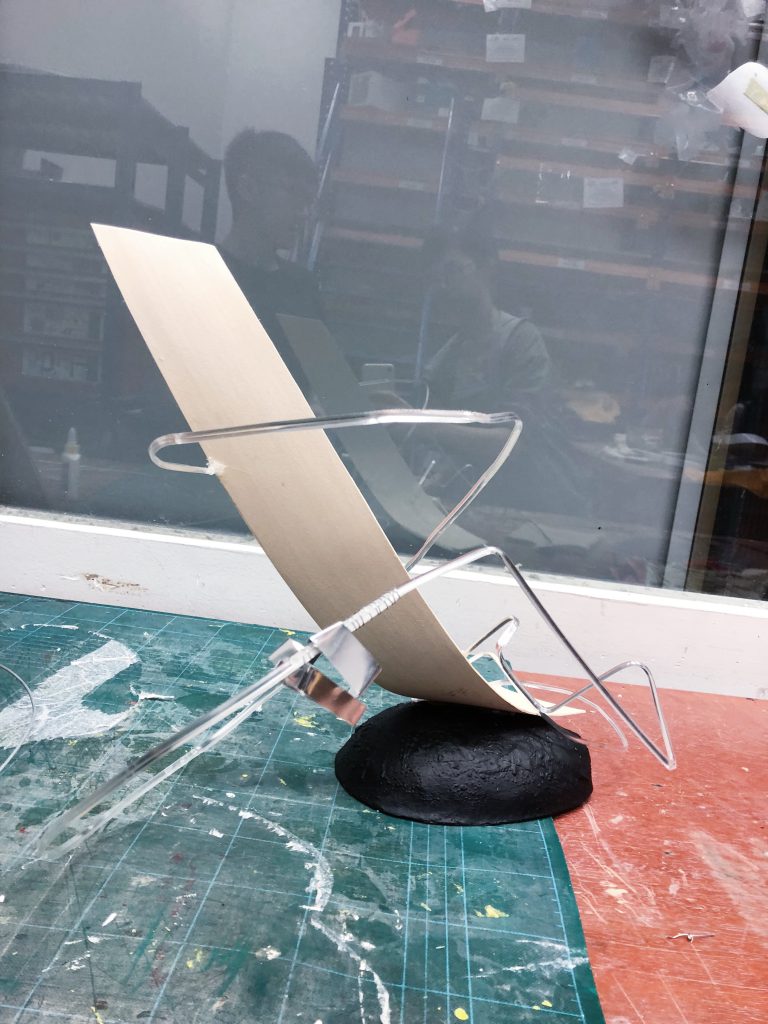
Final Model

Since we were to keep memory and scent in mind, the choice of materials was an important consideration that we made. We looked into transparent and reflective surfaces, because those elements are closely associated with memory and scent. For instance, mirrors may symbolise the threshold between reality and imagination.
The dominant wooden piece is the bridge that connects our scents.
The acrylic rod is our SD, and it is made of grouped planes. The portion with the broken plane represents Jun Ming’s unpleasant scent — the groundsheet — because his scent makes him remember his NS days. The words associated with it are rough, tough, uncomfortable etc. The curve plane is my pleasant scent — Vicks Vaporub, because I associate it with comfort.
The reflective SO reflects our scents into our memories (if that even makes sense).
We were also inspired by old vintage flapper hats, whereby the wooden piece is a replacement of the feather, and the swirl is a replacement of the rim of the hat.
We played with voids through the swirly acrylic rod. Our original intention was to let the the acrylic rod droop down to the face area to create interesting voids. However the piece was too heavy and would not hold so we had no choice but to improvise and stick it higher up.
Despite the challenges faced and the immense amount of patience required, this project was fun to execute!
Feedback given was to reposition the SO such that it casts a shadow / reflections onto the wood!

